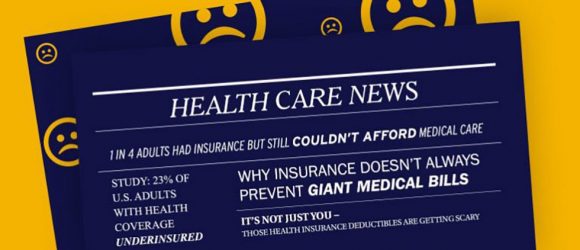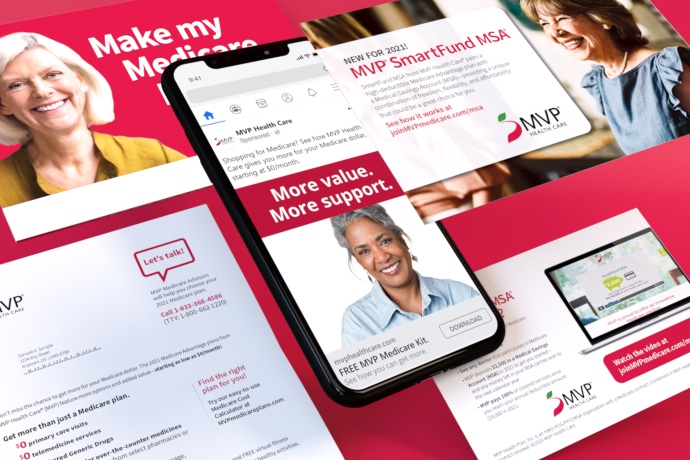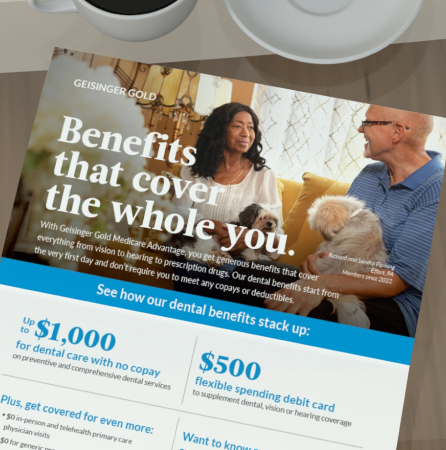5 Tweetable Bits of Advice That Still Stand Out After AHIP

One of the common themes of AHIP Institute’s 2015 conference in Nashville earlier this month was all the talk about innovation. However, most of what we’re continuing to think about – and determined to put into practice – has to do with a few provocative bits of sound advice we picked up in the sessions we attended.
Before we highlight our favorites, we want to emphasize one thing: for all that’s said (sometimes negatively) about healthcare, it’s clear that lots of very intelligent people are giving the industry good reason to be optimistic about the future. Innovators like Patrick Soon-Shiong and Elizabeth Holmes are not only creating new technologies but also forging the paths necessary to advance them. Soon-Shiong’s NantHealth, for example, is figuring out new ways to attack cancer and in the process shifting the treatment model and reducing the cost of care. And Holmes, through her company theranos, is focused on making lab testing more accessible and less expensive for everyone. She’s already persuaded legislators in Arizona to eliminate laws that prohibited consumers from getting lab tests without a prescription, and she’s working to do the same in the other 49 states.
It’s quite astounding what’s possible, and it’s nothing short of amazing where healthcare may go in the future. We’ll certainly remember the energy and drive of these innovators (and others) and watch closely as they play a large role in transforming the industry.
Health insurers are also going through a transformation through which they’re learning to operate in a new kind of marketplace with new national policies and a new driving force: the consumer experience. In that context, we thought we’d share some bits of advice that we heard at the AHIP conference. You may or may not agree with them, but we think you’ll find them thought-provoking.
- Attend consumer and retail conferences, not just healthcare conferences. — The speaker who shared this nugget said that he allowed his team to attend only one healthcare conference per year and that any other conferences were to be focused on the consumer or retail space. Why? Because most payers are way behind when it comes to being truly consumer-centric, and there’s much to learn from those whose livelihoods depend on it.
CLICK TO TWEET: Attend consumer/retail conferences, not just #healthcare conferences: http://bit.ly/1IwVs7n / #hcmktg advice for insurers from #AHIP2015
- Gather intel on healthcare delivery firsthand. — Send employees into doctors’ offices and hospitals to observe (as much as possible) what occurs. Witnessing the environment can provide insights for health insurers and inspire them to think about how health coverage works… and the ways improved healthcare delivery may enhance the customer experience.
CLICK TO TWEET: Gather intel on #healthcare delivery firsthand: http://bit.ly/1IwVs7n / #hcmktg advice for insurers from #AHIP2015
- Understand that customers don’t want to interact with you. — Consumers want their health plans to work in a way that they’re practically invisible. They want coverage to be so easy and convenient that they don’t even have to think about it. In fact, if consumers do interact with their insurers, it’s often because of a snag of some kind. Consider how the best customer experience is a smooth one… where you work quietly and unobtrusively in the background. Simple relationships may be the key to loyalty and retention.
CLICK TO TWEET: Understand that customers don’t want to interact with you: http://bit.ly/1IwVs7n / #hcmktg advice for insurers from #AHIP2015
- Eliminate 50% from your member communications. — This one was particularly provocative because the speaker wasn’t saying what to cut and what to keep but, simply, that the best first step is to reduce the volume (the noise!) by 50%. In other words, stop overwhelming customers with touch points and material they don’t want or need. Instead, think about what matters to each one of your members and treat them accordingly.
CLICK TO TWEET: Eliminate 50% from your member communications: http://bit.ly/1IwVs7n / #hcmktg advice for insurers from #AHIP2015
- Consider the possibility that your customer satisfaction survey might be — Speaking of keeping it simple, take a look at your customer satisfaction surveys. It’s very likely that they are ineffective. The more basic, intuitive and honest they are the more likely they are to actually work. Ingrid Lindberg from Chief Customer (who is also the source for the “eliminate 50%” advice above) has a terrifically blunt blog post about this. Surveys must seek opinions. You must be brave.
CLICK TO TWEET: It’s very likely that your customer satisfaction survey is terrible: http://bit.ly/1IwVs7n / #hcmktg advice for insurers from #AHIP2015
Part of the reason these recommendations continue to resonate with us is because they’re concrete examples of how insurers can make an impact in the consumer-driven environment fairly quickly… and they all have something to do with the customer experience.
So these are the takeaways that continue to stand out following our time with AHIP in Nashville. What ideas are still holding your attention?
CLICK TO TWEET: 5 Bits of Advice That Still Stand Out After AHIP: http://bit.ly/1IwVs7n / #hcmktg advice for insurers from #AHIP2015









